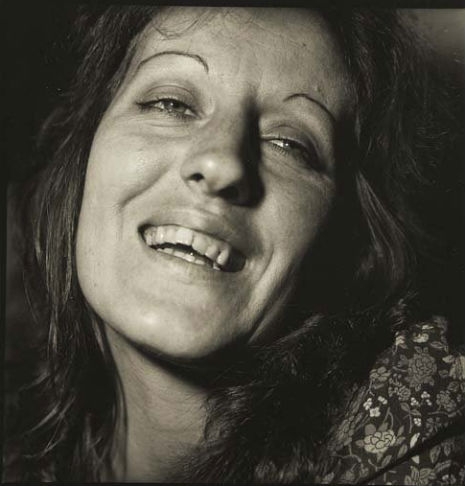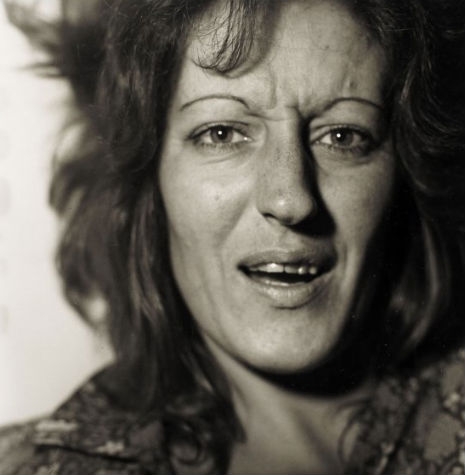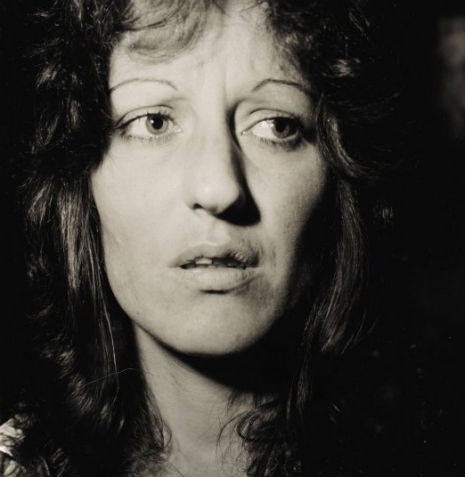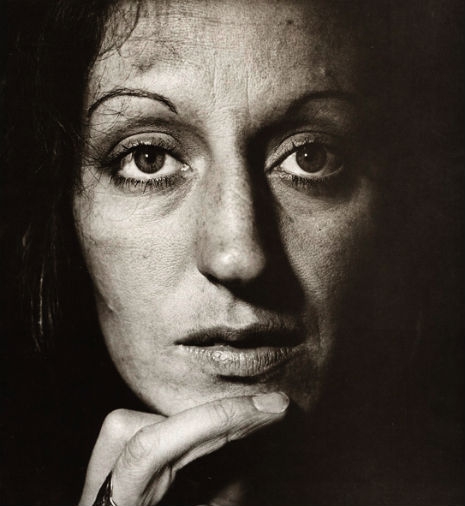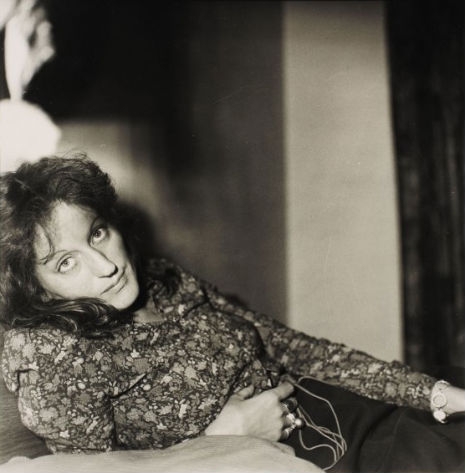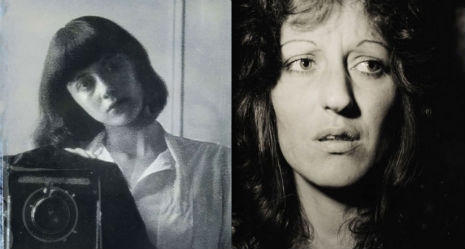
Though Diane Arbus was famed for her photographs of “deviant and marginal” people “whose normality seems ugly or surreal,” she did not want to be thought solely as a photographer of freaks. This in part may explain why Arbus accepted a commission to take a portrait photograph of Germaine Greer for the publication New Woman. Unless, of course, the magazine’s editors thought there was something freakish about the Antipodean academic, journalist and feminist?
On a hot summer’s day in 1971, Arbus arrived to photograph Greer at the Chelsea Hotel. Greer was on tour with her book The Female Eunuch and had most recently taken part in an infamous head-to-head with Norman Mailer at New York City’s Town Hall. Seeing the diminutive photographer was overly laden with equipment, Greer helped Arbus up to her hotel suite.
Greer may have been showing consideration to the photographer, but the session soon turned into a battle of wills as Arbus ordered the Greer around the room, telling her to lie on the bed, and then straddling her as she snapped away. Greer later related meeting with Arbus to the photographer’s biographer Patricia Bosworth:
It developed into a sort of duel between us, because I resisted being photographed like that—close up with all my pores and lines showing!! She kept asking me all sorts of personal questions, and I became aware that she would only shoot when my face was showing tension or concern or boredom or annoyance (and there was plenty of that, let me tell you), but because she was a woman I didn’t tell her to fuck off. If she had been a man, I’d have kicked her in the balls.
Unable to deliver a telling kick, Greer opted not to co-operate.
‘I decided “Damn it, you’re not going to do this to me, lady. I’m not going to be photographed like one of your grotesque freaks!” So I stiffened my face like a mask.
Greer would later claim the duel with Arbus as a draw, but as Howard Sounes noted in his superlative cultural biography of the Seventies:
The editors at New Woman evidently thought Greer vs. Arbus had resulted in defeat for the photographer, for her pictures were never used in the magazine. In a letter to [her husband] Allan, Diane discussed her attitude to the shoot, perhaps revealing her approach to her subjects generally. She wrote that she had liked Germaine Greer personally, considering her to be ‘fun and terrific looking…’ Nevertheless she went out of her way to depict her in an unflattering light. As she said, ‘I managed to managed to make otherwise.’
The picture from the session, printed posthumously as ‘Feminist in her hotel room, NYC, 1971’, is in fact fascinating, not least because in close-up, Greer’s neatly plucked and re-applied eyebrows more than a passing resemblance to the transvestite in curlers Arbus photographed back in 1966.
Arbus was not best suited to working as a freelance photographer—the hours spent pitching ideas that often came to nothing, or struggling to earn agreed fees from indifferent publishing houses to maintain her independence, caused her deep depression. Taking fashionable portraits of celebrity figures was hardly the work for an artist photographer who believed:
A photograph is a secret about a secret. The more it tells you the less you know.
